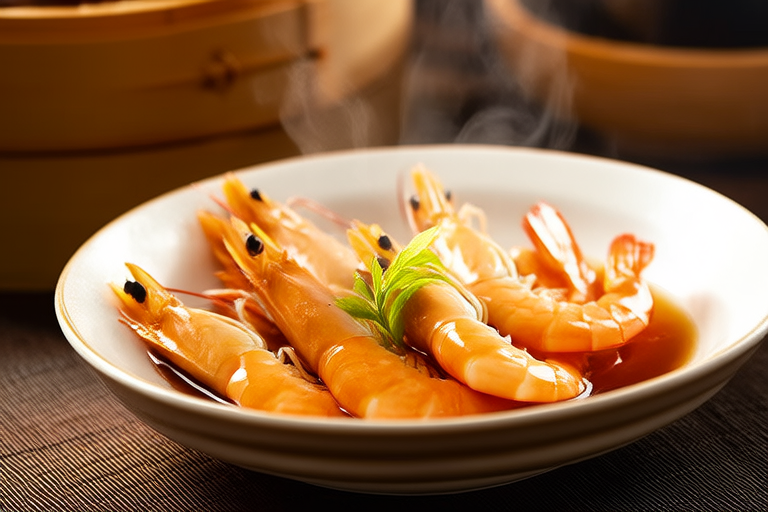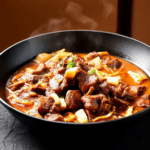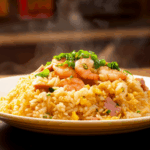Exquisite Longjing Shrimp with Tea Leaves
Introduction:
Longjing Shrimp with Tea Leaves is a classic dish that combines the delicate flavor of fresh shrimp with the rich aroma of Longjing tea. This dish not only satisfies your taste buds but also brings you closer to the culture and history of Chinese cuisine. In this article, we will explore the origins of this dish, its preparation techniques, and the best ways to enjoy it.
Origins and Cultural Significance
The origin of Longjing Shrimp with Tea Leaves can be traced back to Hangzhou, Zhejiang Province, where Longjing tea is grown. The dish is a perfect representation of the culinary traditions of this region, blending the freshness of seafood with the sophistication of tea. Longjing tea, also known as Dragon Well tea, is one of the most famous green teas in China, renowned for its unique “chestnut” aroma and smooth taste. The addition of tea leaves to the dish not only enhances its flavor but also adds an extra layer of cultural significance.
In traditional Chinese medicine, both shrimp and tea leaves are believed to have health benefits. Shrimp is rich in protein and low in fat, making it an excellent source of nutrition. Longjing tea, on the other hand, is said to aid digestion and promote weight loss. By combining these two ingredients, the dish offers a delightful balance of flavors and potential health benefits.
Ingredients
- Shrimp – 300 grams
- Longjing tea leaves – 2 teaspoons
- Garlic – 3 cloves
- Ginger – 1 tablespoon
- Salt – to taste
- Sugar – to taste
- Olive oil – 2 tablespoons
- Soy sauce – 1 tablespoon
- Vinegar – 1 teaspoon
- Water – as needed
Optional ingredients include sesame oil, scallions, and chili flakes for added flavor.
Preparation Techniques
- Prepare the Shrimp: Start by peeling and deveining the shrimp. Rinse them under cold water and pat them dry with paper towels. Season the shrimp with salt and pepper and set them aside.
- Prepare the Tea: Boil a pot of water and steep the Longjing tea leaves for about 3 minutes. Strain the tea and discard the leaves. Set the brewed tea aside to cool.
- Prepare the Aromatics: Mince the garlic and ginger finely. Heat olive oil in a wok or large skillet over medium heat. Add the minced garlic and ginger and stir-fry until fragrant, about 30 seconds.
- Cook the Shrimp: Add the seasoned shrimp to the wok and cook for about 2-3 minutes on each side until they turn pink and opaque. Remove the shrimp from the wok and set them aside.
- Combine the Ingredients: Pour the cooled tea into the wok and add soy sauce, vinegar, sugar, and a pinch of salt. Stir well to combine. Bring the mixture to a simmer and let it reduce slightly.
- Finish the Dish: Return the cooked shrimp to the wok and toss gently to coat them evenly with the tea-based sauce. Cook for another minute to allow the flavors to meld together. Garnish with chopped scallions and sesame oil if desired.
Tips for Success
To ensure the best results, follow these tips:
- Choose fresh, high-quality shrimp for optimal flavor and texture.
- Steep the Longjing tea leaves properly to extract their full flavor. Avoid over-steeping, which can make the tea bitter.
- Adjust the seasoning according to your taste preferences. Some people prefer a more pronounced tea flavor, while others may want a milder taste.
- Use high-quality olive oil for frying to enhance the overall flavor profile of the dish.
- Consider adding optional ingredients like sesame oil, scallions, or chili flakes for extra depth of flavor.
Serving Suggestions
Longjing Shrimp with Tea Leaves pairs wonderfully with steamed rice or noodles. It can also be served as an appetizer or a light main course. For a more substantial meal, consider serving it alongside a simple salad or stir-fried vegetables. The dish’s delicate flavors complement the freshness of the vegetables, creating a well-rounded and satisfying meal.
For those who prefer a heartier option, you can serve the shrimp over a bed of rice noodles or egg noodles. The tea-infused sauce provides a unique twist to the traditional noodle dishes, making it a memorable dining experience.
Conclusion
Longjing Shrimp with Tea Leaves is a dish that beautifully blends tradition and innovation. Its unique combination of fresh shrimp and Longjing tea leaves creates a harmonious balance of flavors that is both comforting and sophisticated. Whether you’re a seasoned chef or a novice cook, this dish is sure to impress your guests and become a favorite in your repertoire.
By following the steps outlined in this article, you can prepare a delicious and authentic version of Longjing Shrimp with Tea Leaves. Enjoy the process of cooking and savor every bite of this exquisite dish.


